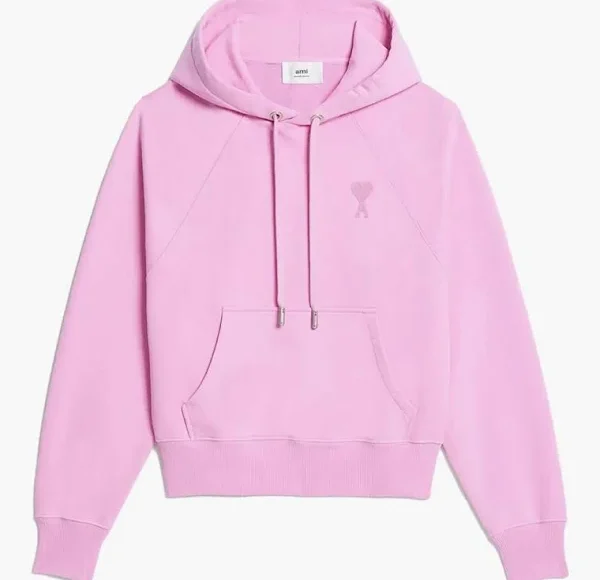In the age of hyper-competition, companies are always on the lookout for innovative ways of distinguishing themselves and building long-term relationships with customers. One trend that has taken massive traction in 2025 is custom packaging. Anything but mere protective packaging for products, custom packaging has become a powerful tool for creating brand identity, enhancing customer experience, and fostering loyalty. This entry discusses how creative packaging specific to the current trends and innovations is redesigning customer relationships and why companies should invest in it to capture long-term loyalty.
The Power of First Impressions
Unboxing has become so prevalent that it is now a cultural phenomenon, with tens of millions of videos on platforms such as X and TikTok showing consumers eagerly unwrapping their purchases. A 2024 Dotcom Distribution survey revealed that 61% of consumers are more likely to reorder from a brand that provides an unforgettable unboxing experience. Custom packaging plays a role here, transforming a mundane delivery into a source of happiness. From bright, branded boxes to personalized thank-you notes, companies are using packaging to create emotional connections.
In 2025, the trend is heading towards hyper-personalization. Companies are using data analytics to personalize packaging based on individual preferences, such as by putting the customer’s name or designing boxes that reflect their purchasing history. For example, beauty firms such as Sephora have introduced limited-edition boxes with customer-designed patterns, so the recipients feel extra special. This personalization makes customers feel a part of something, driving repeat business and word-of-mouth promotion.
Sustainability: A Non-Negotiable Trend
Sustainability is still a key aspect of current packaging efforts. McKinsey in a 2025 report demonstrated how 78% of customers would be willing to have brands use green packaging and 55% would be willing to pay a premium for it. Tailor-made packaging allows businesses to remain committed to such principles through the utilization of materials that are recyclable, biodegradable, or compostable. Patagonia and Lush are at the forefront, with the use of mushroom-based packaging and reusable containers that resonate with eco-conscious customers.
Moreover, minimalist packaging is also in, with less waste and beauty packaged as one. Apple’s clean, recyclable iPhone packaging, for example, has set smaller brands on a path to emulating that look without compromising on sustainability and elegance. In the process of laying stress on how they care about the planet, companies not only gain environmentally conscious consumers but also win consumer trust, an essential component of driving loyalty.
Storytelling Through Design
Custom packaging is a storytelling medium through which brands can convey their values and personality. In 2025, creative, innovative design takes center stage, with businesses using augmented reality (AR) elements to interact with consumers. For example, QR codes on packaging can take consumers to interactive brand stories or temporary promotions, creating a sense of closer connection. Nike’s new AR-capable shoeboxes, unlocking virtual try-on experiences, have been widely celebrated on X for uniting technology and imagination.
Color psychology is also a big trend since companies apply specific colors to create emotions. According to a study in the 2024 Journal of Consumer Research, warm colors such as red and orange will increase excitement and cool colors such as blue create trust. With nicely designed packaging, companies get to control the way their customers feel about them, and with each shipment, it is a reinforcement of what they are.
Enhancing Functionality and Convenience
In addition to being beautiful, custom packaging is becoming increasingly functional to accommodate changing consumer demands. Convenience reigns supreme in 2025, and brands are creating packaging that makes life easier and more convenient to use and store. For example, meal kit deliveries such as HelloFresh have pioneered resealable, compartmentalized product box double as storage capacity, reducing clutter and improving user experience. Likewise, online shoppers are embracing “frustration-free” packaging, reducing tape and excessive layers to make unboxing easier.
Smart packaging is also on the increase, with such technology as NFC chips being utilized to offer product information or authenticity checking. Luxury brands such as Gucci have seen the potential, utilizing smart tags to help prevent counterfeiting and offer consumers a luxury, high-tech experience. Such technologies not only add value but also convey the message to customers that the company values their convenience and security, driving loyalty.
Building Community and Advocacy
Personalized packaging can turn customers into brand ambassadors. Seasonal or limited-edition packaging, such as Coca-Cola’s holiday cans, gives a sense of exclusivity and gets customers to flaunt their purchases on social media. As per a Sprout Social survey in 2025, 68% of consumers are more likely to trust brands with active social media presence, and personalized packaging achieves that. By designing Instagram-friendly packaging, businesses encourage user-generated content, leading to word-of-mouth buzz.
Furthermore, packaging creates community. Companies such as Glossier include stickers or collectible inserts in their packages and encourage consumers to join online forums where they exchange collections. Community is a reinforcing factor that reinforces emotional connection, making consumers loyal and encouraging friends to buy the brand.
The Cost-Benefit Equation
While customized packaging is a cost, return on investment cost is high. In a study by Packaging Digest published in 2024, it was estimated that brands using customized packaging experienced customer retention increase as well as average order value. Small businesses, especially, are advantaged by low-cost digital printing technologies that make high-quality customization affordable without the massive financial outlay. Platforms such as PackSavvy and Arka have simplified it for startups to create professional-quality packaging, equalizing playing fields.
In addition, private label packaging minimizes returns as products reach consumers in pristine condition. Sturdy, bulk-friendly boxes minimize damage, while high-visibility branding minimizes order confusion mix-up. These efficiencies pay for themselves and beyond, boosting customer satisfaction further solidifying loyalty.
Overcoming Challenges
While it is advantageous, bespoke packaging has its drawbacks. Planning must be balanced against cost, sustainability, and creativity. Companies must deal with supply chain disruptions, which have continued until 2025 as a result of global economic changes. Having a trusted packaging supplier and flexible design can help to counteract these problems. Brands also need to maintain consistency across markets in an attempt to maintain a consistent image, as diversified packaging can undermine confidence.
Final Thoughts
Custom packaging will also get an upgrade in the future with the use of AI and 3D printing. Print Monkey tools integrated with AI will make real-time customization possible, and 3D-printed packaging will provide unmatched precision and sustainability. Innovative companies who keep up with increasing consumer demands will remain in the lead, leveraging packaging as a strategic tool to win loyalty.
Finally, custom packaging is not a trend, it’s an investment in customer loyalty. Through creating effective, sustainable, and functional packaging, brands can differentiate themselves, build emotional connections, and make customers into evangelists. In 2025, the ones making this idea the main principle will not just survive but prosper in the competitive market with a strong message proving that a well-designed box says it all.















Leave a comment